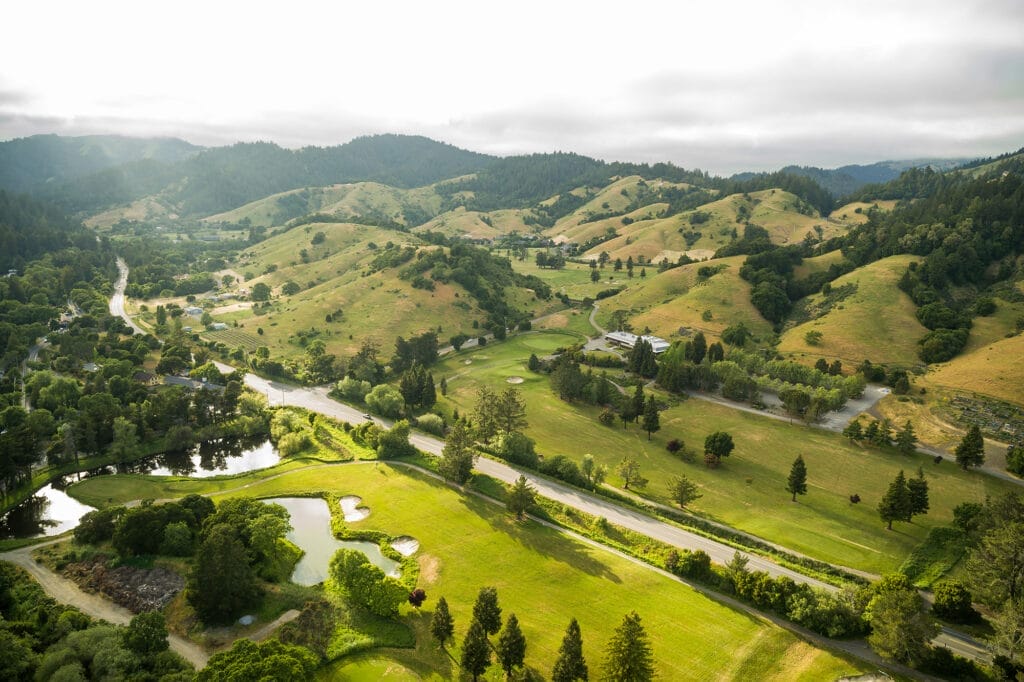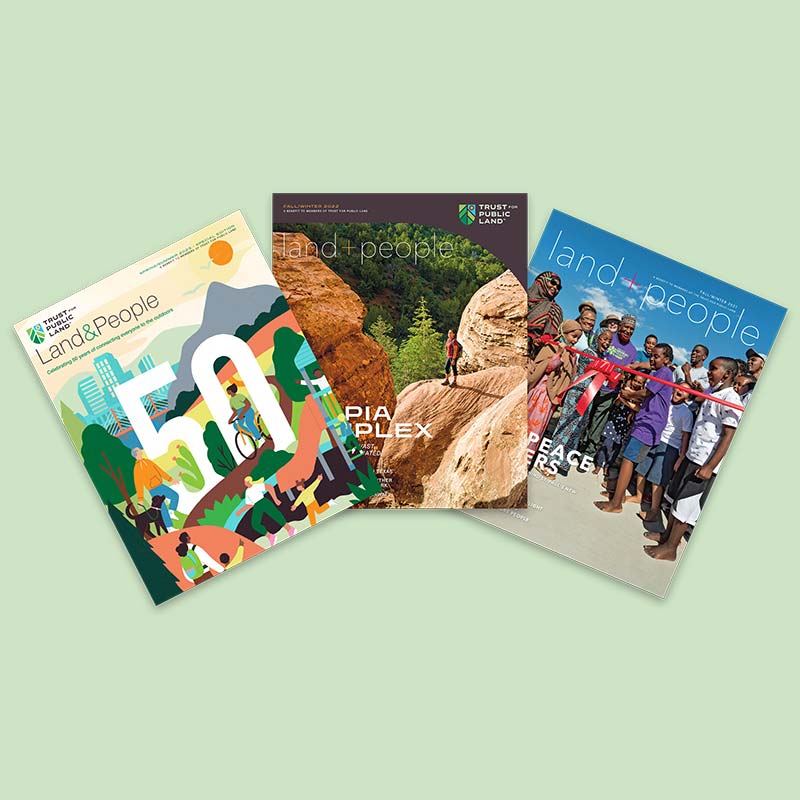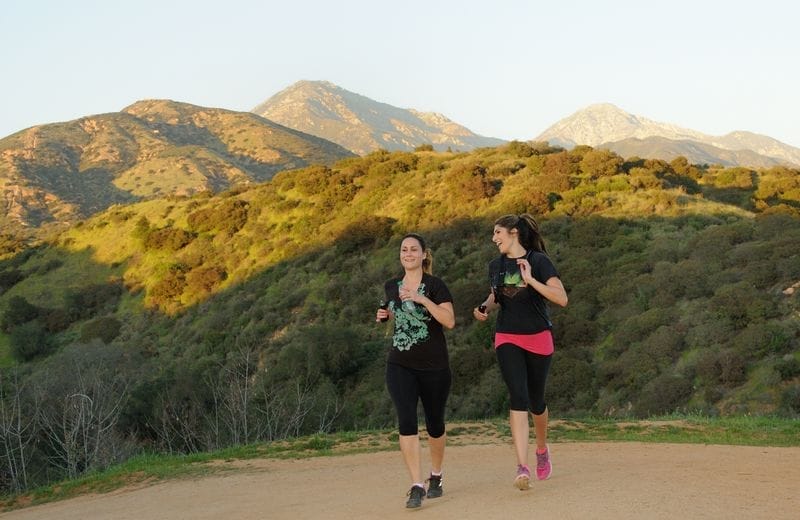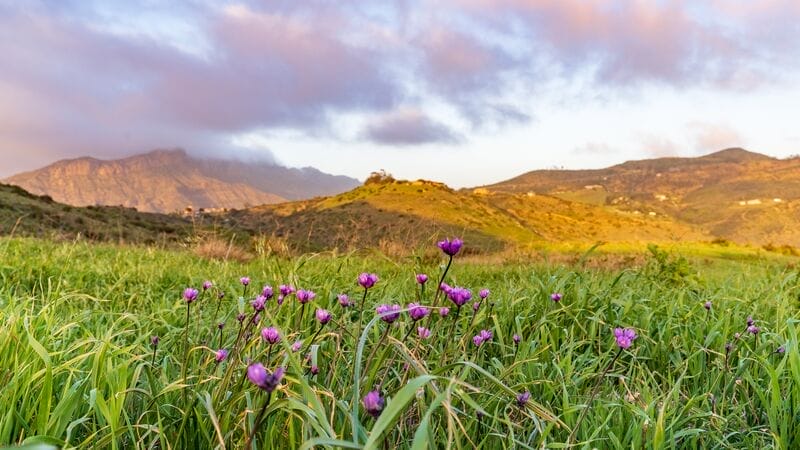On a cool, dry day last summer, members of the Amah Mutsun Tribal Band set fire to 30 acres of ranchland in San Juan Batista, California. It wasn’t an accident. It was a “cultural burn”—a form of prescribed fire accompanied by traditional songs. Tribes have used it as a tool to steward land for millennia.
It was the first time in 200 years that the local tribes were able to engage in the ancient activity. Trust for Public Land, which had helped protect the 540-acre ranch, now known as the Harvey and Gladys Nyland Property, embraced it. The ranch is nestled just inland from the state’s central coast, where TPL has long focused its conservation energies on improving access to outdoor recreation and safeguarding biodiversity. But recently, as part of a broader climate agenda in the state, we’ve begun to focus on wildfire resiliency too.
“Five years ago, we would have done that transaction and not given any thought to an Indigenous cultural burn, let alone wildfire fuel reduction,” said Guillermo Rodriguez, TPL’s California state director. “It’s an organizational shift–to be much more intentional about bringing the right partners to the table in order to think about how conservation can support wildfire resilience.”
More Fires More Often
Across the West, where the frequency and intensity of wildfires have increased in recent years, TPL is looking to conserve land in ways that reduce the risk to life and property. We’re doing it while supporting the full complement of wildfire management strategies that strengthen forest health and community resiliency. Much like the field teams on the ground across the West are expanding their project criteria to include wildfire mitigation, our Conservation Finance team works with state and local officials to incorporate wildfire mitigation, management, adaptation, and restoration funding into ballot measures across the region. With local and dedicated streams of wildfire funding, communities can address ongoing needs, match state or federal opportunities, and are more resilient in the face of the threat of catastrophic wildfire. Further, with local money on hand, our field teams can then help frontline communities implement smart conservation initiatives to meet their wildfire resilience objectives.

Long a working landscape, Temescal Ranch was one of the largest stretches of private undeveloped land in Los Angeles County. It is a critical wildlife corridor, allowing for species adaptation to changing climate, and preventing development in a high fire severity zone. Photo: Annie Bang
In California, Trust for Public Land sat on the state’s Wildfire and Forest Resilience Task Force. We helped to shape the final action plan. Released in 2021, the state plan made numerous recommendations, including an increase in conservation programs with an eye on wildfire risk.
Conservation for Access, Wildlife, and Wildfire Resilience
In addition, earlier this year we received a $1.5 million multi-year grant from Edison International. We’ll use the funds to expand land conversation in the Transverse Ranges with a focus on wildfire resilience. Part of the plan is to overlay wildfire data onto the regional maps that TPL’s data science team has already created focused on public access, wildlife connectivity and biodiversity.
That will point TPL more strategically toward properties that hold the most potential for wildfire resilience. Conservation approaches include acquiring lands in the so-called wildland urban interface (WUI); protecting properties atop mesas, where developers are circling; and conserving steep slopes adjacent to at-risk residential areas.
“We will finally have a focal point and some resources to really do a deeper dive and to look at a particular geography from multiple vantage points,” Rodriguez added. “The goal is to create that Venn diagram or sweet spot where you have public access and biodiversity and you can also create wildfire resiliency.”
Filling in the Checkerboard
Almost 900 miles north, near Wenatchee, Washington, TPL is undertaking another major project that could significantly reduce the risk of wildfire in the region. In 2022, our staff there signed a contract to purchase up to 35,000 acres of private timberlands along the eastern flank in the Cascade Mountains over seven years.
The land is particularly vulnerable to wildfire because it falls within a larger landscape marked by a “checkerboard” of ownership. The private timberlands have been owned by a revolving door of private entities over many decades and form a patchwork quilt with lands owned and managed by the U.S. Forest Service. This ownership pattern makes it challenging for the Forest Service to implement landscape-scale restoration efforts on their lands. As a result, the federal agency has been stymied here in its wildfire reduction measures, which include prescribed burns, tree thinning and removal of dead (and highly flammable) underbrush.
The plan is for TPL to purchase the timberlands in the Upper Wenatchee River Basin, from Chinook Forest Partners, who bought these lands in 2021 with the goal of partnering with TPL to clean up the checkerboard. If all goes as hoped, TPL will buy the lands and transfer them to the Forest Service and other partners in several phases, beginning with more than 5,000 acres next summer. The land is currently off limits to the public, due–not surprisingly–to the risk of accidental fire that can morph into catastrophic wildfire. But once the land is owned by the Forest Service, the land will be open for public recreation and the Forest Service can begin restoration efforts.
Meeting Communities’ Needs and Priorities
Ann Welz, a senior project manager for TPL who is based in Wenatchee, said the climate crisis was compounding an already dire situation, with parts of the West suffering through a decades-long megadrought. Washington State has already had over 1,300 wildfires that have burned over 280,000 acres this year – and the wildfire season is far from over.
Trust for Public Land’s roots in the region run deep; we’ve worked in the Wenatchee area for over 30 years. A decade ago, we joined Chelan County, the Chelan-Douglas Land Trust, The Nature Conservancy, and community leaders to help craft the Upper Wenatchee Community Lands Plan, a forward-looking document that identifies the lands that best meet the community’s values for expanded recreation, healthy forests, and wildlife habitat. TPL specifically sought to get Chinook Forest Partners’ 35,000 acres under agreement because this Plan identified most of them as a high community priority.
Nature-Based Solutions to Reduce Wildfire Risk
Back in California, TPL’s focus on wildfire resilience is expanding beyond the Transverse Range. Several years ago, outside San Francisco, the organization bought and began restoring a former golf course before transferring it to Marin County in May. Today, the land is the county’s newest park: San Geronimo Commons. “Nowadays,” as The New York Times reported earlier this year, the “grounds are mowed just twice a year, and haven’t been doused with pesticides or rodenticides since 2018.” That’s the year TPL acquired the 150-acre property.

At San Geronimo Commons, a former golf course turned community green space in California, fire mitigation and management was central to the restoration effort. Photo: Kevin Quach
The ecological restoration, which involves rejoining floodplains, will certainly make the former golf course less prone to fire. But the site is also serving as a hub for firefighters who fan out from the San Francisco area to battle blazes. As part of the agreement transferring ownership to the county, the site will become the future headquarters for the Marin County Fire Department. In fact, the property has already stepped up; in 2020, it was the basecamp for CalFire, the state agency, as it fought the Woodward Fire in nearby Point Reyes National Seashore.
As wildfires and drought conditions worsen with climate change, conserved lands across the West are likely to be called on to deliver more than one ecological service. Nature-based solutions and land conservation help communities adapt to the effects of the climate crisis, such as wildfire, while also absorbing and locking up carbon emissions, the driver of the crisis.
David Patton, TPL’s national lands initiative director and VP of strategic leadership, said the fragile interface between the undeveloped wildlands and human development will continue to be a priority. “It’s not just important for wildfire management, but also for wildlife, recreation, and conservation in general,” he explained. “Communities within the WUI grow by approximately 2 million acres per year, yet that space has the most conservation value, and if managed for wildfire resiliency, can provide an important buffer.”
Lisa W. Foderaro is a senior writer and researcher for Trust for Public Land. Previously, she was a reporter for the New York Times, where she covered parks and the environment.

Donate to become a member, and you’ll receive a subscription to Land&People magazine, our biannual publication featuring exclusive, inspiring stories about our work connecting everyone to the outdoors.


